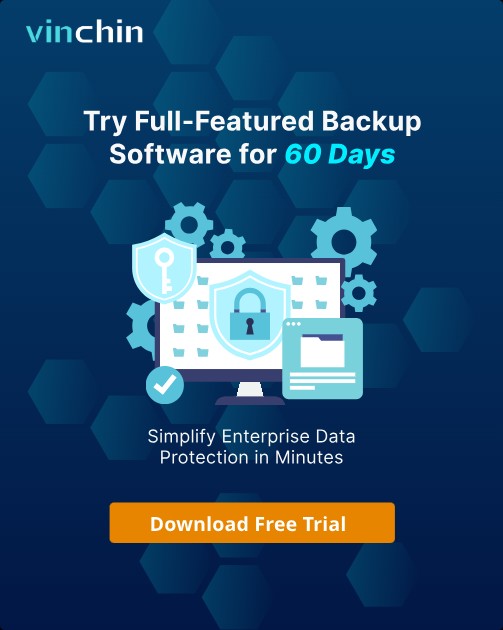-
What Is VMware Redundancy?
-
Why VMware Redundancy Matters?
-
Method 1: Using VMware High Availability (HA) for VMware Redundancy
-
Method 2: Using VMware Fault Tolerance (FT) for VMware Redundancy
-
Method 3: Using vSphere Replication for VMware Redundancy
-
How to Backup VMware Virtual Machines with Vinchin Backup & Recovery?
-
VMware Redundancy FAQs
-
Conclusion
Downtime can disrupt business operations in seconds. In a virtualized environment, even minor outages can have major consequences. That's why vmware redundancy is essential—it keeps your workloads running smoothly when unexpected failures strike.
What Is VMware Redundancy?
VMware redundancy means building your virtual infrastructure so it can survive hardware or software failures without losing data or access to services. It uses features like clustering, replication, failover, and backup to ensure that if one part fails, others take over quickly.
Why VMware Redundancy Matters?
Redundancy is not just a technical luxury—it's vital for business continuity. Hardware breaks down, networks disconnect, storage devices crash; these are facts of life in IT operations. Without proper vmware redundancy strategies in place, a single failure could bring your entire environment offline until repairs are made—costing time and money you cannot afford to lose.
Method 1: Using VMware High Availability (HA) for VMware Redundancy
VMware High Availability (HA) forms the backbone of most vmware redundancy plans at the cluster level. HA automatically restarts virtual machines on healthy hosts if a server fails—minimizing downtime without manual intervention.
To set up HA:
1. Create a cluster using vCenter.
2. Enable the vSphere HA feature.
3. Ensure all hosts share access to common storage so VMs can move between them.
4. Configure admission control policies to reserve enough resources for failover events.
5. Set host isolation response settings—decide what happens if a host loses network contact but remains powered on.
6. Enable datastore heartbeating so HA can distinguish between network partitions and true host failures.
When a host stops responding (default detection time is 15 seconds but configurable), HA uses both network heartbeats and datastore heartbeats to confirm failure before restarting affected VMs elsewhere—usually within 30–60 seconds depending on VM size and storage speed.
Admission control reduces usable cluster capacity by reserving resources for potential failovers; plan accordingly using VMware's Host Failures To Tolerate formula based on your risk tolerance level.
Method 2: Using VMware Fault Tolerance (FT) for VMware Redundancy
VMware Fault Tolerance (FT) takes vmware redundancy further by providing continuous availability—not just fast restart—for critical workloads that cannot tolerate any interruption or data loss.
FT works by creating an active shadow copy of each protected VM on another ESXi host within the same cluster:
1. Both hosts must have identical CPU models and access to shared storage.
2. Enable FT from vCenter by right-clicking the VM and selecting Turn On Fault Tolerance.
3. A dedicated FT logging network is strongly recommended; use at least 10Gbps bandwidth per protected VM to avoid congestion during state synchronization.
4. FT supports up to four vCPUs per VM starting from vSphere 6.x; earlier versions may be limited. Always check compatibility before deployment.
Method 3: Using vSphere Replication for VMware Redundancy
While HA protects against single-host failures inside clusters—and FT shields select VMs from any downtime—vSphere Replication extends vmware redundancy across sites or datacenters by copying VM data asynchronously at scheduled intervals.
With vSphere Replication:
1. Install the replication appliance through vCenter Server Appliance Management Interface (VAMI).
2. Select which VMs you want replicated; configure target location (local datastore or remote site).
3. Set replication frequency—the minimum Recovery Point Objective (RPO) is usually 15 minutes but depends on bandwidth/storage constraints.
4. Monitor status through vCenter's Monitor > vSphere Replication dashboard; address any warnings promptly.
5. In case of disaster at the primary site, initiate recovery manually via Recovery Plans defined in Site Recovery Manager (SRM), if available—or restore directly from replica copies as needed.
Unlike instant failover solutions like FT, replication-based recovery involves some manual steps—but it protects against larger disasters such as fire or flood affecting an entire datacenter rather than just individual servers within it.
How to Backup VMware Virtual Machines with Vinchin Backup & Recovery?
Beyond built-in redundancy features, robust backup remains crucial for safeguarding against ransomware attacks and accidental deletions in VMware environments. Vinchin Backup & Recovery is an enterprise-level solution supporting more than fifteen mainstream virtualization platforms—including leading support for VMware alongside Hyper-V, Proxmox, oVirt, OLVM, RHV, XCP-ng, XenServer, OpenStack, ZStack and others—to deliver comprehensive protection across diverse infrastructures.
Vinchin Backup & Recovery offers advanced capabilities such as quiesced snapshot support on VMware environments only; CBT technology for efficient incremental backups; granular restore options; and powerful deduplication/compression mechanisms—all designed to maximize efficiency while minimizing backup windows and storage usage in demanding enterprise scenarios.
The intuitive web console makes protecting your critical workloads straightforward:
1.Just select VMware VMs on the host
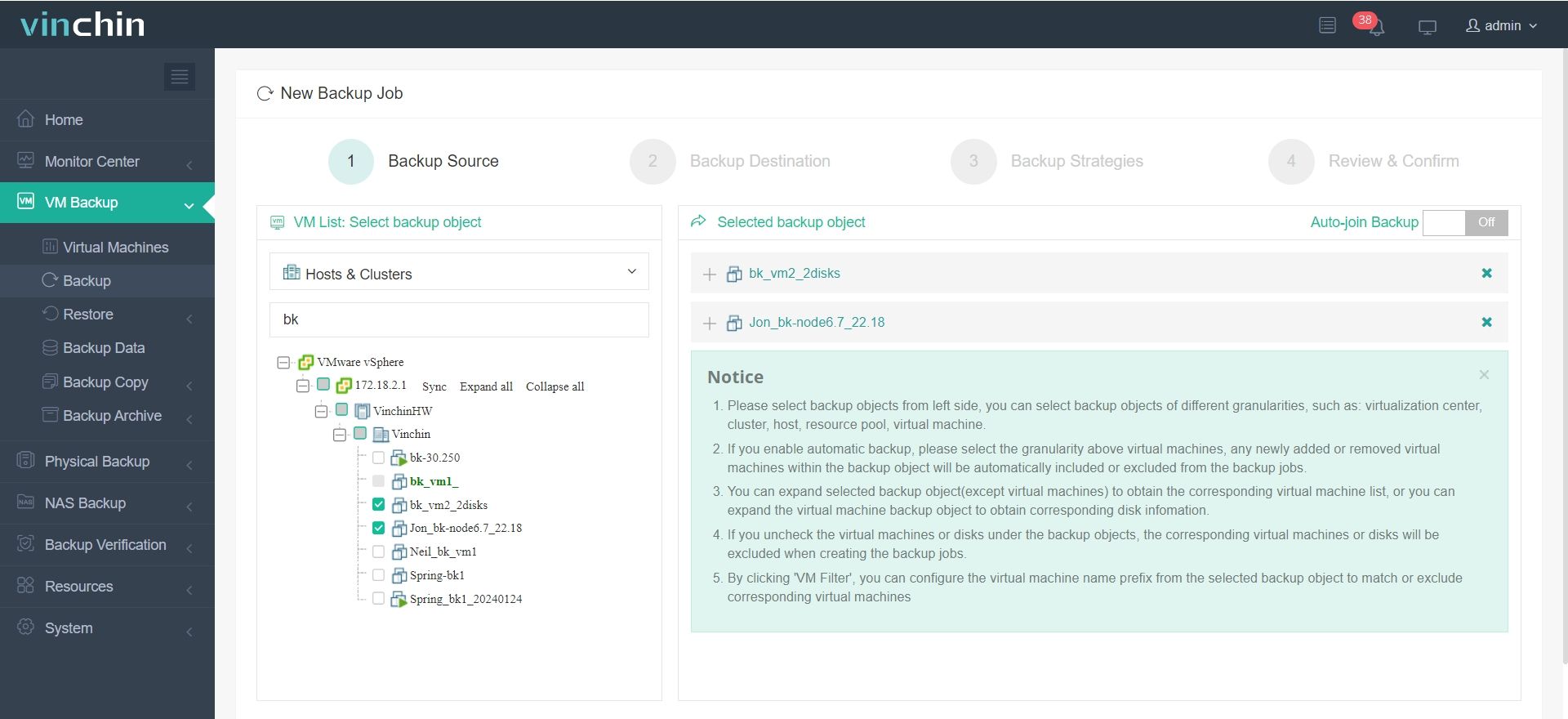
2.Then select backup destination
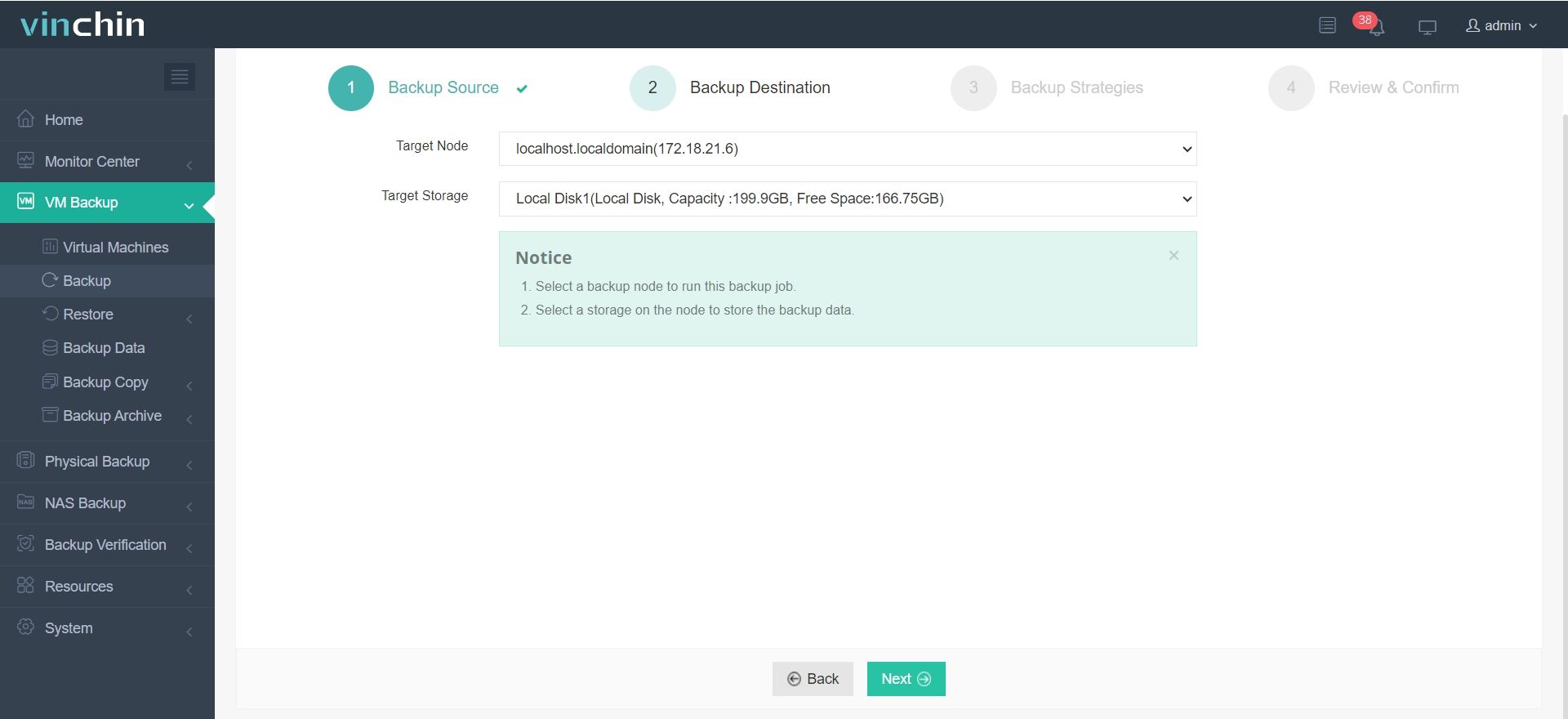
3.Select strategies
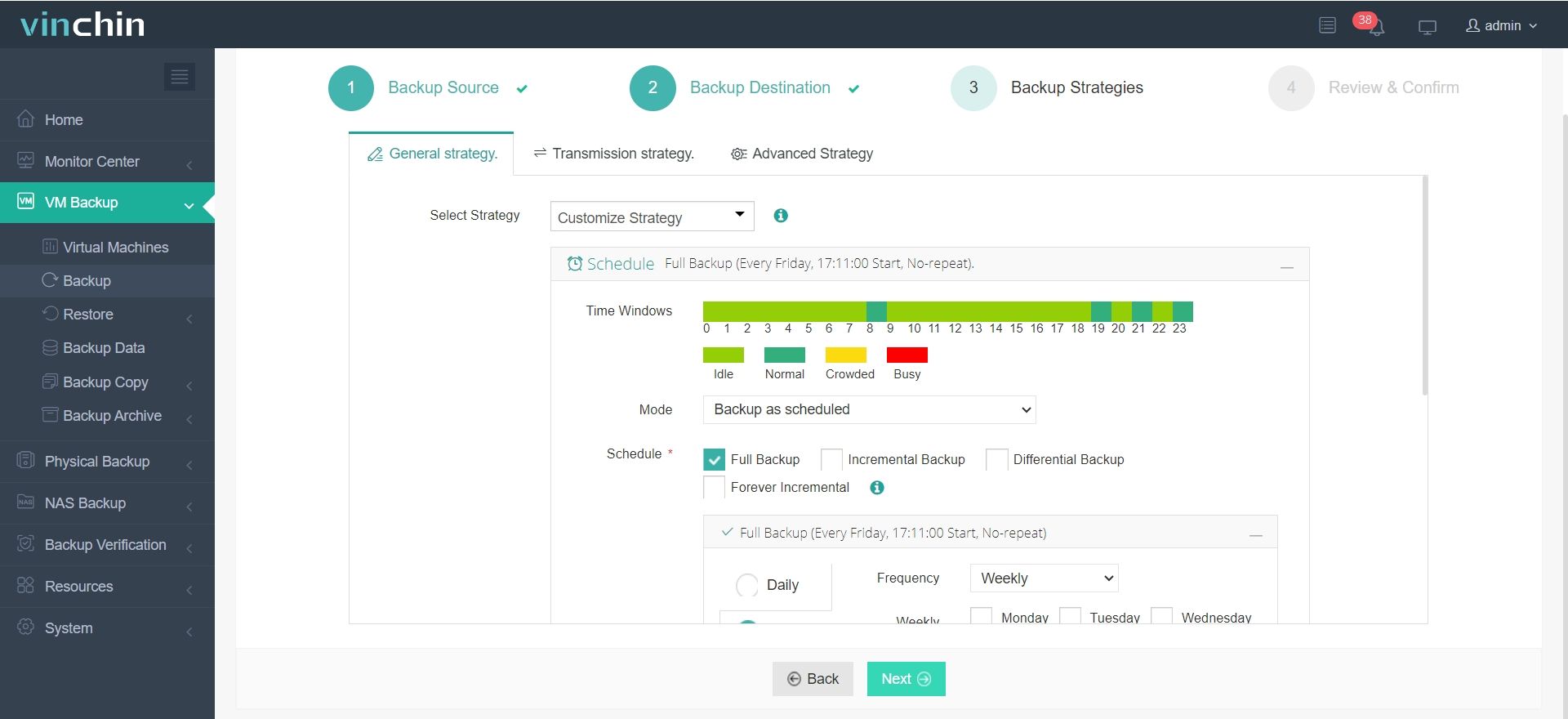
4.Finally submit the job
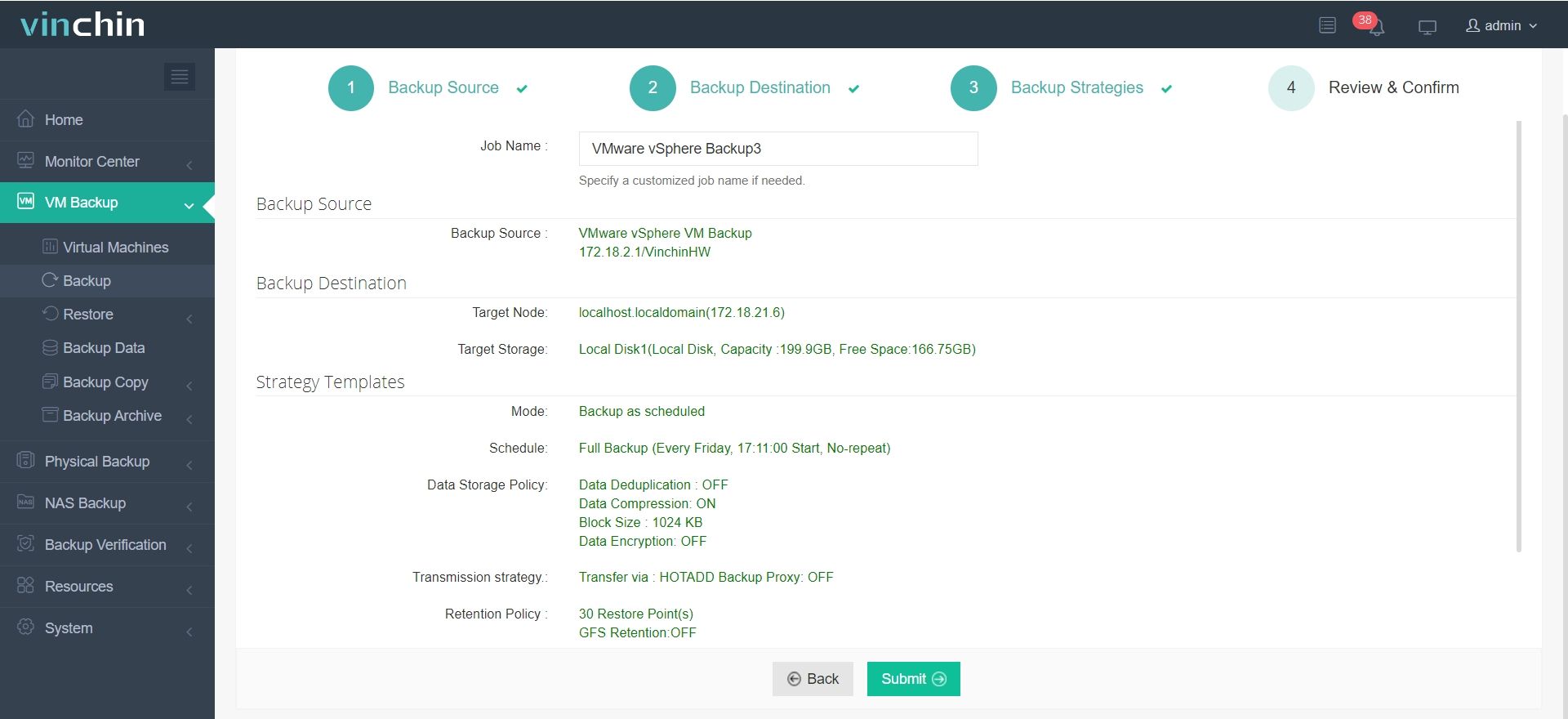
Recognized globally with top ratings among enterprise users worldwide, Vinchin Backup & Recovery offers a full-featured free trial valid for 60 days—click below to experience its reliability firsthand!
VMware Redundancy FAQs
Q1: How do I test my vmware redundancy setup without risking production?
A1: Clone non-production VMs then simulate host/network/storage failures using MAINTENANCE MODE commands while monitoring restart times via EVENTS tab in vCenter.
Q2: Can I combine different types of vmware redundancy together?
A2: Yes—you may mix HA clusters with selective use of FT plus site-level replication depending workload criticality budget constraints.
Q3: How do I validate network path resilience?
A3: Run esxcli network vswitch standard policy failover get -v <switch> then unplug uplinks sequentially while ping-testing gateways from affected hosts’ management interfaces.
Conclusion
Vmware redundancy keeps your virtual machines available despite hardware hiccups big or small—from failed servers through lost links right up catastrophic site-wide disasters alike! For complete peace-of-mind add Vinchin backup/recovery atop native protections today—and sleep easier knowing every angle covered no matter what tomorrow brings next!
Share on:





